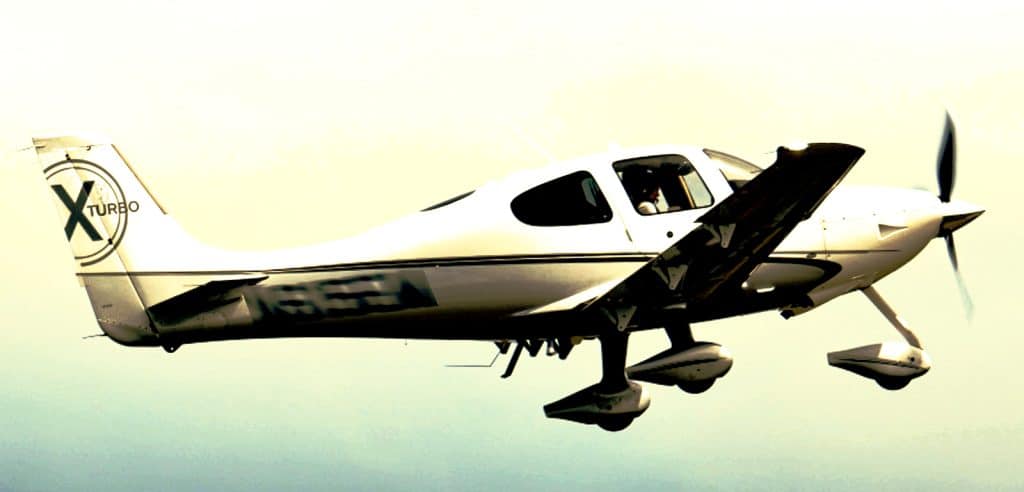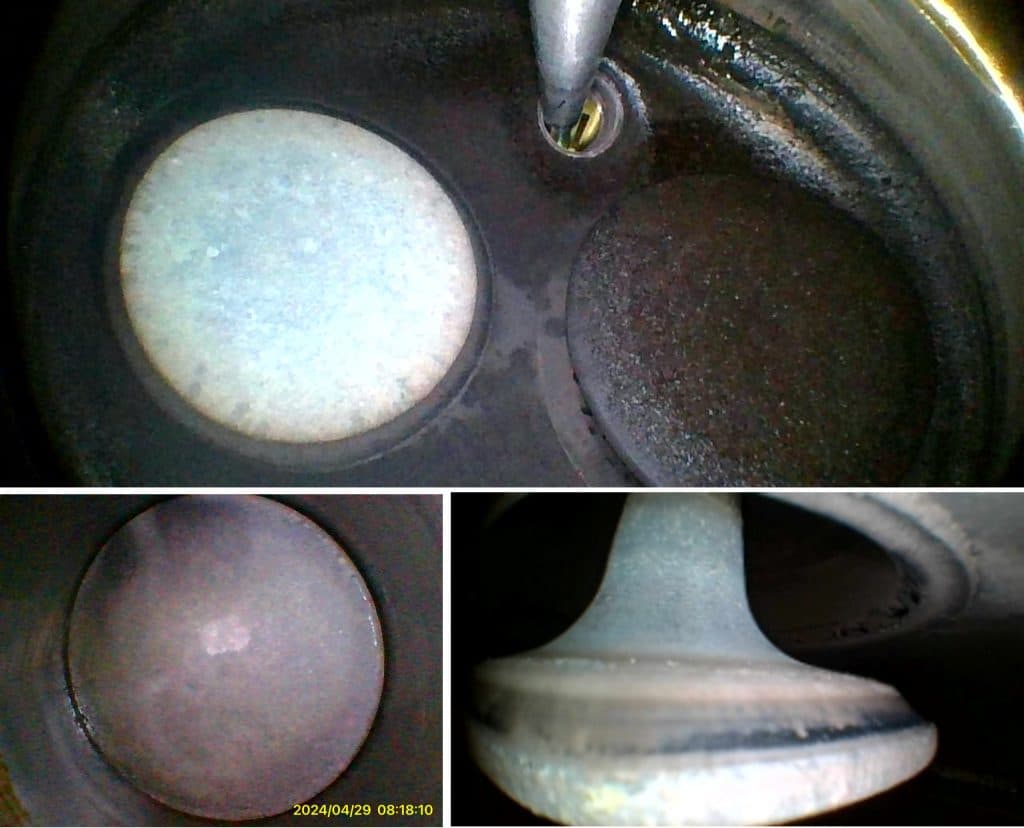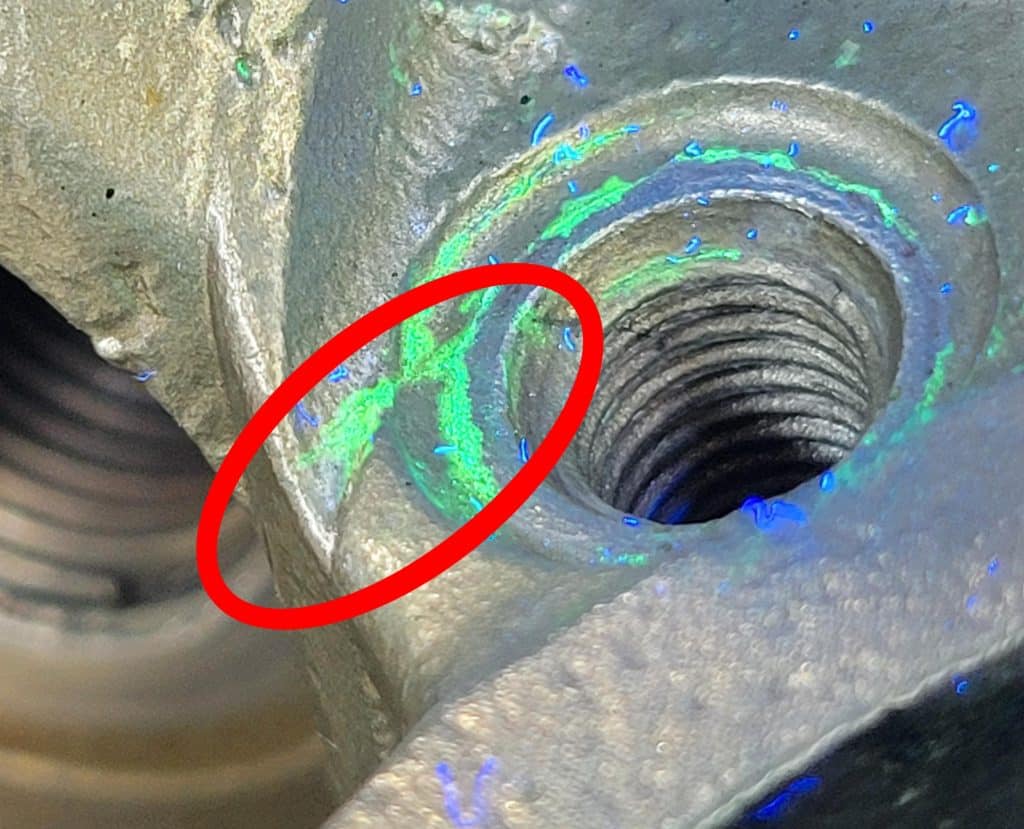Can a mechanic who works on your plane refuse to sign it off or put it back together?
Boston-based Cirrus owner Mark (not his real name) was flying his turbonormalized SR22 home to Norwood Memorial Airport on what was probably going to be his last flight prior to putting the plane in the shop for its 2024 annual inspection. While cruising over northern New England, the engine started running rough and the engine page on the MFD showed that the CHT of cylinder #2 had risen above 400°F and was continuing to rise. Mark went full rich and throttled back to stop the thermal runaway, then declared an emergency with ATC and made a precautionary landing.

After an uneventful landing, Mark taxied the Cirrus to the sole FBO on the field, which included a big Part 145 Repair Station that just happened to be a Cirrus Authorized Service Center. He told the director of maintenance (DOM) about the rough-running engine and the rising CHT #2, and asked that the shop troubleshoot the issue. Mark then rented a car and drove home to Boston.
The Shop’s Diagnosis
A few days later, Mark phoned the shop to learn what they had found. The DOM told him they’d borescoped the #2 cylinder and determined that it had suffered detonation damage and would need to be replaced, explaining that “the exhaust valve appeared to be completely white.” They also indicated that they were pretty sure that the detonation was due to an exhaust leak in the lefthand turbocharger that was torching the #2 cylinder with hot exhaust gases. “The other turbocharger is leaking oil pretty badly, so you really need to overhaul them both,” the shop told Mark.

The shop then brought up supply chain issues. They told Mark that new IO-550 cylinders were severely backordered. They also said that turbocharger overhauls were unusually slow because repair parts were in such short supply.
Mark was less concerned about cost than he was about getting his plane back home to Norwood before it went out of annual. He told the shop that he still had the previous engine that had been removed from his SR22 several years ago due to a prop strike, and he would ask his mechanic at Norwood to pull a cylinder off that engine and send it to the shop to install. Mark also said he’d be willing to purchase two new turbochargers if that would be faster than getting his turbos overhauled.
Mark asked his mechanic at Norwood to borescope the cylinders on his old engine and pull the best-looking one to send it to the shop where his airplane was AOG. Mark also located two new turbochargers and arranged for them to be sent to the shop.
A few days later, the DOM called Mark and informed him that they had found cylinder head cracks in two other cylinders, and those would also need to be replaced. They also said that the V-band clamps on both turbochargers were probably past their life limit and would also need to be replaced.
Breakdown Assistance
Mark was becoming extremely uncomfortable with what this shop was doing. He remembered that he had subscribed to Savvy Aviation’s breakdown assistance service, and thought it might be a good idea to ask for help, so he called Savvy’s 24/7 hotline. Within a few minutes, he received a phone call from Tom Cooper A&P/IA, one of Savvy’s most experienced account managers. Mark told Tom about his in-flight CHT #2 runaway, his precautionary landing, his request that the FBO troubleshoot the problem, and everything that had transpired since then.
“Instruct the shop to sop work immediately,” Tom told Mark. “They’re clearly on a fishing expedition to find every discrepancy they can. We can’t let them do that. We need to instruct them to confine their activity to the problem you had with the #2 cylinder.”
Mark called the shop to tell them to stop work on his airplane, and told them to expect to hear from Savvy’s Tom Cooper. As it happened, Savvy had worked with this shop before so they were already set up in Savvy’s online ticket system. Tom began communicating with the DOM via the ticket system, creating a contemporaneous written record of communications between the DOM, Mark and Tom.
Show Me the Evidence
Tom asked the DOM to post the borescope images of cylinder #2 so he could take a look at them. The DOM posted three excellent images, one of the heads of both valves (exhaust and intake), one of just the exhaust valve, and a third showing the face of the exhaust valve when it was wide open.

Tom reviewed these borescope images and asked several other members of the Savvy team to do so. All of us agreed that the valves looked perfectly normal. Tom also obtained the engine monitor data for the incident flight and asked Savvy data analyst Stephanie Schledorn A&P/IA to review it. Stephanie reported that CHT #3 never exceeded 429°F—not even close to Continental’s redline of 460°F—and that the EGT had been stable, suggesting that no detonation had occurred in the cylinder.
Tom asked the DOM if they had a borescope image of the piston crown—where detonation signatures would first show up—but the shop hadn’t taken any images of the piston. Tom also asked the DOM if the shop had inspected the #2 fuel nozzle, and was told that this had not been done. Tom asked about the condition of the top spark plug—the next place one would look for evidence of detonation—and was told it looked fine. Tom concluded that the shop had found no valid evidence of detonation, and that the “white” exhaust valve was a red herring.
Exhaust deposits on the exhaust valve can be any combination of brown, red, orange, yellow, white and even green. The color isn’t important. What’s important is whether the deposit pattern appears symmetrical or not. Tom sent the shop a copy of the AOPA poster “Anatomy of a Valve Failure” to help them understand how to distinguish normal and abnormal exhaust valves, and why we were convinced that Mark’s #2 exhaust valve looked normal.
Cylinder Head Cracks?
Tom asked the DOM why they were concerned about cylinder head cracks. The shop cited Continental service bulletin MSB09-1B which dealt with head cracks between the top spark plug and fuel nozzle bosses. The DOM insisted that the cylinders with cracked heads had to be replaced. The shop sent Tom some photographs showing fluorescent dye penetrant inspection results of several cylinders. Some of those photos revealed nothing of interest, but a couple showed features that could be cracks.

Tom had several problems with the position the shop was taking. First, neither Mark nor Tom had authorized the shop to inspect the cylinders for cracks. Second, the Continental service bulletin was just a service bulletin, so as a Part 91 operator Mark was not obligated to comply with it. Third, the Continental service bulletin applied to only 300 cylinders identified by lot number. Finally, head cracks in this area are common and have never caused any sort of in-flight failure, incident or accident.
Tom consulted with Eric Svelmoe A&P/IA, Savvy’s manager of quality assurance and training. This was Eric’s take on the situation:
“This shop is not performing an annual inspection, so their opinion about the engine’s airworthiness is irrelevant. So is Continental’s service bulletin at the moment. None of the cracks in the pictures are ever going to cause a cylinder failure so there is no safety concern. I’m not seeing any problems with the turbochargers, based on the photographs provided by the shop. The oil found in one turbocharger is undoubtedly caused by a slightly leaky check valve, and can be dealt with at Mark’s convenience. Mark should simply instruct the shop to put his aircraft back together so he can fly it home, and not remove any cylinders, even if the shop considers those cylinders to be unairworthy. Let’s get Mark’s airplane out of jail and get it home for its annual inspection. A ferry permit shouldn’t be necessary because the shop can’t declare the aircraft to be unairworthy since they haven’t been authorized to inspect it.”
Getting Out of Jail
Tom asked the DOM how much disassembly had been done. The shop indicated that they’d removed the top cowling, removed the left hand intercooler to gain access to the #2 cylinder, removed the top spark plug to allow the cylinder to be borescoped, but had not yet removed any cylinders or turbochargers. This was good news!
Tom told the DOM that Mark wanted the shop to put the airplane back together in flyable condition.
“We can’t sign off the airplane in that condition,” the DOM insisted. “It’s not airworthy.”
Tom advised the DOM that he had no authority to withhold his signature. He explained that FAR 43.9 required any person who performs maintenance to describe the work performed in a maintenance record entry and to sign the entry with a certificate number and type to signify that the work was performed satisfactorily. The only maintenance the shop did was to remove the left hand intercooler and the #2 top spark plug and then reinstall them. The shop is required by FAR 43.9 to describe this work performed and sign it off as satisfactory.
The DOM realized that Tom was right about this, and quickly switched his strategy. “We are not willing to put the airplane back together under these circumstances,” he told Tom.
Tom was not happy about this, and decided to call the FSDO. (Normally we would not get the FAA involved, but since Mark had declared an emergency the FAA was already involved.) Tom first spoke to the Principal Maintenance Inspector who had responsibility for oversight of this shop, and subscequently spoke to the FSDO manager. They were both sympathetic with Mark’s plight and unhappy with the shop’s refusal to reassemble the airplane. However, they explained to Tom that there was nothing they could do about it, because there is no regulation requiring a shop to perform work that it doesn’t want to do. There is no regulation requiring a shop or mechanic that has taken something apart to put it back together! (Maybe there should be?)
It became clear to Tom that the only way out of this situation would be to bring in an outside A&P to put Mark’s airplane back together so he could fly it home. Tom asked the DOM whether it would be possible to tow Mark’s airplane to an empty hangar where this could be done. The DOM said there were no hangars available. Tom asked if the airplane could be moved outside on the ramp, but the DOM said that doing maintenance on the ramp was prohibited.
Finally, Tom asked if the DOM would permit an outside A&P to reassemble Mark’s airplane in the shop’s maintenance hangar. The DOM said he would agree to this but only if one of his mechanics was supervising the process (billed for at the shop’s hourly rate). Tom advised Mark that this seemed to be the best option available, and that the reassembly should take no more than a couple of hours.
By now, there was an additional complication: Mark’s airplane was now out of annual an so couldn’t be flown home without a ferry permit. Tom discussed this with the FSDO manager, and received assurance that if the A&P who put the airplane back together was willing to sign a “safe to ferry” logbook entry, the FSDO would issue a ferry permit.
As I’m writing this, Tom and Mark are working on lining up an A&P who will put the plane back together and sign it off as safe to ferry.
Lessons
Mark’s unfortunate tale offers some important lessons for any aircraft owner who faces unplanned maintenance away from home. If you need to put your airplane in a shop that you haven’t worked with before, make sure you keep the shop on a very short leash. Give them precise instructions on what work you want them to perform, and make it explicitly clear that they are not authorized to go beyond the scope of what you’ve authorized. Give the shop a maximum number of hours or dollars that they are authorized to expend without contacting you for authorization.
Make sure the shop understands you are NOT authorizing them to perform an airworthiness inspection or to make an airworthiness determination. Make it clear that your objective is to make the airplane safe to fly home, NOT to make it technically airworthy. The FAA only requires you to have your airplane inspected for airworthiness one day per year (FAR 91.409)—the other 364 days a year, responsibility for determining airworthiness lies with the PIC (FAR 91.7).
If despite your instructions you get the feeling that the shop is on a fishing expedition to find things wrong with your aircraft or to make a determination that your aircraft is unairworthy, immediately instruct them to stop work. (When you find yourself in a hole, the first thing to do is to stop digging!) Then come up with a plan to get your airplane put back together and out of the shop (not necessarily in that order).
Finally, the regs require anyone who commits maintenance on your aircraft to document it in a logbook entry and to sign it off—they cannot refuse to do that. While it might not be a regulatory violation for someone to take your airplane apart and then refuse to put it back together, it certainly is unethical in my humble opinion.